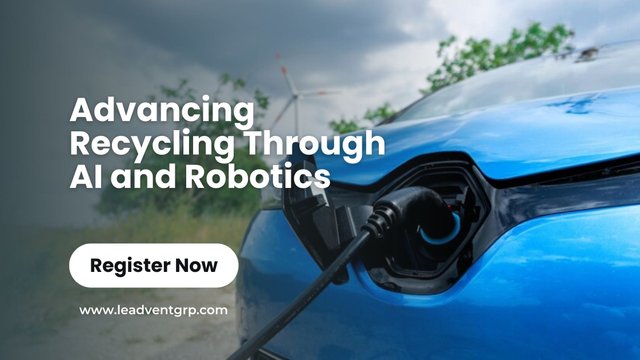Advancing Recycling Through AI and Robotics
The rapid adoption of electric vehicles (EVs) has created an urgent need for innovative solutions to manage the growing number of used EV batteries. Traditional recycling methods are no longer sufficient to meet the demand and environmental challenges posed by discarded batteries. Fortunately, AI and robotics are revolutionizing electric vehicle battery recycling, offering smarter, safer, and more efficient methods.
The Challenges in Electric Vehicle Battery Recycling
EV batteries are complex systems composed of valuable but hazardous materials like lithium, cobalt, and nickel. Extracting these materials through conventional means is labor-intensive, costly, and often harmful to the environment. Challenges include:
- Identifying and separating different battery types.
- Minimizing human exposure to hazardous substances.
- Reducing energy consumption during the recycling process.
- Ensuring high recovery rates for reusable materials.
The Role of AI and Robotics in Battery Recycling
Artificial intelligence and robotics are reshaping how batteries are recycled, addressing inefficiencies and environmental concerns. Here are some of the advancements:
1. Automated Sorting Systems
AI-powered robots can quickly identify and sort batteries by type and chemical composition. This precision reduces pollution and ensures optimal recycling outcomes.
2. Predictive Maintenance and Lifecycle Analysis
Machine learning models analyze battery health to predict the remaining usable life of batteries. This enables more efficient reuse or recycling decisions.
3. Robotic Disassembly
Manual disassembly of EV batteries is dangerous and time-consuming. Robotics can safely dismantle batteries, separating components like anodes, cathodes, and casings for further processing.
4. AI-Optimized Recovery Processes
AI algorithms optimize chemical recovery processes by determining the most energy-efficient methods to extract valuable materials, reducing overall costs and carbon emissions.
Case Study: Tesla’s Closed-Loop Recycling Program
Tesla’s recycling initiatives leverage AI-driven systems to recover 92% of materials from used batteries. By partnering with Redwood Materials, Tesla ensures that critical minerals like lithium and nickel are reused in new batteries, significantly reducing resource extraction and waste.
Why Attend a Battery Recycling Conference?
The Battery Recycling Conference is a pivotal event for professionals in the EV and recycling industries. Events like the 2nd Annual Electric Vehicle Battery and Recycling Forum provide invaluable insights into the latest technologies, policies, and market trends.
What You Can Expect:
- Expert Panels: Industry leaders discuss cutting-edge technologies like AI and robotics in electric vehicle battery recycling.
- Networking Opportunities: Connect with peers, researchers, and innovators.
- Case Studies: Learn from real-world applications of advanced recycling methods.
- Workshops: Hands-on sessions to explore AI and robotics integration in recycling processes.
Statistics Highlighting the Importance of Enhanced Recycling
- By 2030, over 12 million tons of EV batteries are projected to reach the end of their lifecycle.
- AI-powered recycling systems can increase material recovery efficiency by up to 25% compared to traditional methods.
- Robotic disassembly reduces human labor costs by approximately 30%-40%.
- The global battery recycling market is expected to grow at a CAGR of 8.5%, reaching $24 billion by 2028.
FAQs About AI and Robotics in Battery Recycling
1. How does AI improve battery recycling efficiency?
AI enhances efficiency by automating sorting, optimizing recovery processes, and reducing energy consumption during material extraction.
2. Are robotic systems cost-effective for recycling?
While initial investments are high, robotic systems reduce long-term costs by minimizing labor and improving recovery rates.
3. Why is battery recycling critical for EV sustainability?
Recycling ensures the reuse of scarce materials, reduces mining demand, and lowers the environmental footprint of EV production.
4. What are the latest innovations in AI-driven recycling?
Key innovations include machine learning models for lifecycle analysis, robotics for automated disassembly, and AI-optimized chemical recovery systems.
Conclusion
AI and robotics are not just enhancing electric vehicle battery recycling; they are redefining sustainability in the EV industry. By attending events like the Battery Recycling Conference, professionals can stay ahead of technological advancements and contribute to a greener future. The integration of AI and robotics in recycling processes promises safer operations, higher recovery rates, and reduced environmental impact—making it an essential step forward in the journey toward sustainable energy solutions.
.jpg)